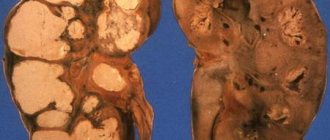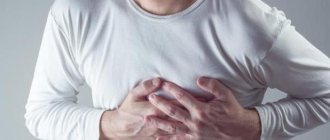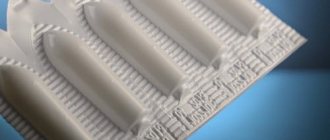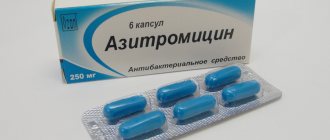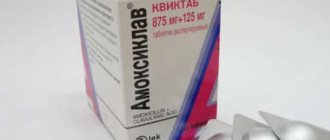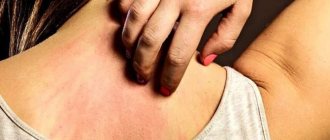Nosocomial infection (HAI)
Nosocomial infection (HAI) is any clinically recognizable disease of microbial etiology in a patient or medical worker associated with stay, treatment, examination or seeking medical care in a health care facility or the working conditions of medical personnel.
For the development of an intrahospital outbreak there must be:
– source (owner, patient, health worker); – microorganism (causative agent); – environment (hospital environment, diagnostic and treatment procedures, etc.)
Sources of nosocomial infections (nosocomial infections):
– medical personnel; – carriers of latent forms of infection; – patients with acute, erased or chronic forms of inf. diseases, including wound infection; – dust, water, food; – equipment, tools.
Risk groups for nosocomial infections (nosocomial infections):
1) patients: – without a fixed place of residence, migrating population, – with long-term untreated chronic somatic and infectious diseases, – not having the opportunity to receive special medical care; 2) persons who: – are prescribed therapy that suppresses the immune system (irradiation, immunosuppressants) – undergo complex diagnostic and surgical interventions; 3) postpartum women and newborns, especially premature and post-term; 4) children with congenital developmental anomalies, birth trauma; 5) medical staff of health care facilities (medical and preventive institutions).
Factors contributing to the occurrence of nosocomial infection:
– underestimation of the epidemic danger of intra-hospital sources of infection and the risk of infection through contact with a patient; – overload of healthcare facilities; – the presence of undetected carriers of nosocomial strains among medical staff and patients; – violation by medical staff of the rules of asepsis and antiseptics, personal hygiene; – untimely implementation of current and final disinfection, violation of the cleaning regime; – insufficient equipment of health care facilities with disinfectants; – violation of the disinfection and sterilization regime for medical instruments, devices, devices, etc.; – outdated equipment; – unsatisfactory condition of catering units and water supply; – lack of filtration ventilation.
Mechanisms of transmission of nosocomial infections (nosocomial infections):
Contact: – direct (from source to owner) – indirect (through intermediate objects: hands, objects)
Aspiration (aerogenic): – inhaling droplets and dust particles
Fecal-oral: – aquatic – food
Transmissible: – through a living carrier
Saprophytes are microorganisms that use substances from non-living objects as a source of nutrition. Parasitic microbes are microorganisms that can live off metabolic products in the tissues of living organisms.
Locations of conditionally pathogenic microorganisms in the human body:
Staphylococcus (Staphylococcus aureus): – hands, – armpits, – inguinal folds, – nasopharynx; Streptococcus: – skin of the hands, – nasopharynx, Pseudomonas aeruginosa: – hands, – pharynx, – intestines, – urinary tract; Klebsiella: – pharynx, – intestines, – urinary tract; E. coli: – hands, – intestines, – urinary tract, etc.
The concept of SER, VBI. Causes of nosocomial infections. Prevention measures
GUIDE TO SIR
PM.04.07 Carrying out work related to the profession of a junior nurse caring for a patient
MDK.04.01.Safe environment for patients and staff
for specialties: 02.34.01.Nursing
02/31/01. General Medicine
Compiled by: Petrova N.V.
Vladimir, 2013
CONTENT
1. The concept of SER, VBI. Causes of nosocomial infections. Preventive measures…………………………………..… 3
2. Prevention of viral hepatitis in health care facilities (SP 2.1.3.2630-10)……………………………………………………7
3. Disinfection. Types of disinfection. Forms of preventive disinfection. (MU 3.1.2313-08)…………..8
4. Disinfection. Local disinfection. Purposes of carrying out, forms of focal disinfection
(MU 3.1.2313-08)………………………………………………………………………………………………………………….10
5. Disinfection of medical products using a physical method. Advantages
this disinfection method. (OST 42-21-2-85; MU 287-113). …………………………………………………..eleven
6. Disinfection of medical products using a chemical method. Disadvantages of the method
disinfection. (OST 42-21-285; 287-113)……………………………………………………………………………………….11
7. Use of disinfectants in health care facilities. Requirements for modern
DS. Precautions when working with DS. (MU-287-113, SP 2.1.3.2630-10)……………………………..12
8. SIR of the reception department. Types of sanitary treatment of a patient in the emergency department
(SP 2.1.3.2630-10)……………………………………………………………………………………………………………13
9. Technique for hygienic treatment of hands of medical personnel. Requirements
for hand hygiene. (SP 2.1.3.2630-10……………………………………………… ………………… ..13
10. Types of hand treatment for medical personnel. Surgical treatment of hands. Means for surgical treatment of hands. (SP 2.1.3.2630-10)…………………………………………………………………………………16
11. Treatment of the injection and surgical field of patients. Requirements for antiseptics for
general or partial treatment of patients. Use of gloves in health care facilities. (SP 2.1.3.2630-10)…….16
12. Rules for covering a large tool table (SP 2.1.3.2630-10)…………………………….17
13. Concept of software. Types of software. Stages of pre-sterilization cleaning manually. Preparation of cleaning solutions for software. Terms of use. (OST 42-21-2-85; MU 287-113)…………………………18
14. Quality control of pre-sterilization cleaning. Requirements for preparation and storage
ready-made reagent Azopyram. Features of testing the suitability of the reagent. (OST 42-21-2-85;
MU 287-113)……………………………………………………………………………………………………………20
15. Cleaning the treatment room (project 720; SP 2.1.3.2630-10). …………………………………………………………..21
16. Sterilization. Types, methods. Physical method of sterilization. Sterilization modes,
indicators of sterility. (OST 42-21-2-85; MU 287-113)……………………………………………………..24
17. Sterilization. Types, methods. Chemical sterilization method. Advantages and disadvantages
of this method (OST 42-21-2-85; MU 2113)………………………………………………………………………………..26
18. Classes of waste from healthcare facilities. Rules for collection, storage, disposal of waste (SP 2.1.7.2527-09)………………..27
19. Disinfection of single-use injection syringes after
injections into health care facilities (MU 3.1.2313-08)…………………………………………………………………………………..28
20. Application of physical methods for disinfection of injection syringes
single use (MU 3.1.2313-08)………………………………………………………………………………………..31
21. Requirements for compliance with TB by personnel when carrying out collection and disinfection
transportation of disposable syringes. (MU 3.1.2313-08)……..………………………..32
22. Rules for administering injections at the patient’s bedside (pr. 38/177)………………………………………….32
23. Sanitary and epidemiological requirements for public catering organizations. Treatment
dishes in the buffet (SP 2.3.6.1079-01; SP 2.1.3.2630-10)……………………………………………………..32
24. Sanitary maintenance of premises, equipment, inventory in health care facilities (MU 3.1.2313-08)………………34
25. Requirements for the rules of personal hygiene of patients in health care facilities. (SP 2.1.3.2630-10). …………………………35
26. Measures in case of contact of biological fluid with the skin and mucous membranes Composition of the first aid kit
first honey help to prevent hepatitis B and HIV infection. (SP 2.1.3.2630-10)……………..36
27. Emergency prevention of parenteral viral hepatitis and HIV infection in health care facilities
with a possible probability of infection (MU-287-113; SP 2.1.3.2630-10)………………………………….36
28. Guidelines for processing endoscopes. SER of endoscopy rooms……………………………………………………………………………………………………………..37
The concept of SER, VBI. Causes of nosocomial infections. Prevention measures.
Nosocomial infection (nosocomial infection) is a collective concept that includes various nosological forms. The definition of nosocomial infection proposed by the WHO Regional Office for Europe in 1979 should be considered the most successful and complete: “ Nosocomial infection is any clinically recognizable infectious disease that affects a patient as a result of his admission to the hospital or seeking treatment, or an infectious disease of a hospital employee due to his work in this institution, regardless of the appearance of symptoms of the disease before or during his stay in the hospital ."
The sources of nosocomial infection in surgical hospitals are patients with acute and chronic forms of purulent-septic diseases and asymptomatic carriers of pathogenic microorganisms among patients and staff.
Depending on the location of the pathogen, its release from the body of the patient or carrier occurs through various organs and tissues - the respiratory tract, gastrointestinal tract, genitourinary tract.
The spread of pathogens of nosocomial infections occurs in two ways: airborne droplets and contact. The main factors of transmission are air, hands, numerous environmental objects (linen, dressings, instruments, equipment, etc.).
The problem of hospital-acquired infections (HAIs) has become extremely important in recent years for all countries of the world.
. The rapid growth of medical institutions, the creation of new types of medical (therapeutic and diagnostic) equipment, the use of the latest drugs with immunosuppressive properties, artificial suppression of immunity during organ and tissue transplantation - these, as well as many other factors, increase the threat of the spread of infections among patients and hospital staff institutions.
Modern scientific facts cited in the works of foreign and domestic researchers suggest that nosocomial infections occur in at least 5-12% of patients admitted to medical institutions. Thus, in the USA, up to 2,000,000 diseases are registered annually in hospitals, in Germany 500,000-700,000, which is approximately 1% of the population of these countries. In the United States, of the 120,000 or more patients infected with nosocomial infections, about 25% of patients die and, according to experts, nosocomial infections are the leading cause of death. Data obtained in recent years indicate that nosocomial infections significantly prolong the length of stay of patients in hospitals, and the damage they cause annually ranges from 5 to 10 billion dollars in the United States.
Types of nosocomial infections.
Conventionally, three types of nosocomial infections can be distinguished:
- in patients infected in hospitals; — in patients infected while receiving outpatient care; — in medical workers who became infected while providing medical care to patients in hospitals and clinics.
What unites all three types of infections is the place of infection - a medical institution.
When characterizing nosocomial infections, it should be noted that this category of infections has its own epidemiological features that distinguish it from the so-called classical infections. They are expressed in the uniqueness of the mechanisms and factors of transmission, the peculiarities of the course of epidemiological and infectious processes, and also in the fact that the medical personnel of healthcare facilities play a crucial role in the emergence, maintenance and spread of nosocomial infections.
Causes of nosocomial infections
Prerequisites contributing to the increase in the incidence of nosocomial infections include:
1. Violations in the organization of hospital work, sanitary and technical conditions, material support and compliance with the anti-epidemic regime.
2. Unsatisfactory architectural and planning solutions:
— insufficient composition and area of premises;
— intersection of technological flows;
— lack of supply and exhaust ventilation.
3. Violations in the organization of work:
- hospital overload;
— emergency situations on water supply and sewerage systems,
- interruption in the supply of hot and cold water,
— disturbances in heat and energy supply;
— disturbances in the operation of supply and exhaust ventilation.
4. Insufficient material and technical equipment:
— lack of medical products, including disposable ones (catheters, sanitation systems, breathing tubes);
— lack of equipment, dressings, medicines;
— interruptions in the supply of linen and disinfectants.
5. Violations of the anti-epidemic regime:
— non-compliance with the cyclical filling of wards;
-reuse of disposable medical products, non-individual use of containers for drinking, feeding, treatment of skin and eyes;
-violations of the rules of current and final disinfection, sterilization.
Categories
- Bacterial infections (41)
- Biochemistry (5)
- Viral hepatitis (12)
- Viral infections (43)
- HIV-AIDS (28)
- Diagnostics (30)
- Zooanthroponotic infections (19)
- Immunity (16)
- Infectious skin diseases (33)
- Treatment (38)
- General knowledge about infections (36)
- Parasitic diseases (8)
- Proper nutrition (41)
- Prevention (23)
- Miscellaneous (3)
- Sepsis (7)
- Standards of medical care (26)
The concept of nosocomial infection
The concept of nosocomial infection (HAI).
The emergence of antibiotic-resistant forms of microorganisms both in the macroorganism and in the external environment has led to the emergence of the problem of nosocomial infection in clinical surgery. Definition. Nosocomial (nosocomial) infection is an infectious disease that arose as a result of infection in a hospital, regardless of the period of onset of symptoms of the disease (during treatment or after discharge); as well as illness of health care workers resulting from infection in the hospital. A nosocomial infection is an infection acquired in a health care facility.
According to WHO, nosocomial infection (HAI) occurs in an average of 8.4% of patients. According to various authors in Russia and Ukraine, it ranges from 2.9 to 10.2%. Children under one year of age and people over 65 years of age are most vulnerable. In the structure of nosocomial infections in surgical hospitals, wound infection (postoperative purulent-septic complications) comes first, then respiratory tract infections (bronchitis, pneumonia), especially in intensive care units, and urinary tract infections. In the United States, surgical wound infections account for 29% of hospital-acquired infections, urinary tract infections account for 45%, and pneumonia accounts for 19%.
Prevention of spread
As is known from practical observations, about 6-7% of patients become infected during hospitalization. Prevention helps reduce the number of illnesses among employees and patients. Infections are prevented by specific measures to eliminate associated factors. The following actions are considered significant measures:
- active control over morbidity levels;
- study of microbial material to identify sensitivity to certain antibiotics and antiseptics;
- constant medical examinations of all employees of the institution;
- compliance with the rules of rational use of antibiotics to combat the disease;
- implementation of instructions on antiseptics and personal hygiene;
- reasonable reduction of hospitalization periods;
- reducing the number of patients in one ward;
- enhanced nutrition and increased immunity of patients.
Epidemiological surveillance is recognized as the basis for the successful fight against hospital-acquired infections. In this case, it is important to dynamically monitor the spread of the pathogen and analyze information about the conditions and factors for the development of viruses and bacteria. Using the method, the collection and consideration of the objective state is ensured in order to select the optimal method of influence.
As a result, the collection of samples is optimized, and advanced technologies for identifying microorganisms are used based on reducing the incubation time using technical means. The practice is becoming popular when effective preparations based on aldehydes, alcohols, cationic surfactants, HOURS and others are used to treat equipment and medical instruments. These products have a wide range of effects on materials, but do not affect functionality.
The fight against infections in hospitals requires a comprehensive application of effective methods. Large manufacturers of medical equipment and products understand the importance of the problem and are investing resources in building a preventive scheme. Work is being carried out in the direction of improving antiseptic methods, while taking into account the effect of the human factor.
Nosocomial infections are divided into two groups:
- I - caused by obligate pathogenic microorganisms and associated with the introduction of the pathogen into the hospital (bacteriosis), or infection of personnel when working with infectious material (children's infections - measles, rubella, chickenpox; intestinal diseases - salmonellosis, dysentery; hepatitis B, C). Their share is 15%.
- Group II diseases caused by opportunistic microorganisms account for 85%. Among the pathogens, the dominant ones are staphylococcus, streptococcus, Klebsiella, Proteus, Escherichia coli, and fungi of the genus Candida.
Nosocomial infections are usually caused by hospital strains of microorganisms with multiple resistance to drugs, high virulence and resistance to unfavorable factors - drying, exposure to UV rays, disinfectants. In purulent surgery departments, cross-infection with individual pathogens is possible.
It should be noted that for each hospital, the isolation of the causative agent of a hospital infection is strictly specific and is not constant (after some time it changes under the influence of antibiotics, preventive measures taken, and compliance with the rules of asepsis and antisepsis).
Prevention of infection.
– minimizing the possibility of infection; – exclusion of nosocomial infections; – preventing the spread of infection outside the medical institution.
1 In order to prevent the occurrence and spread of nosocomial infections (HAI), a plan of preventive and anti-epidemic measures is developed, which is approved by the head of the organization.
Preventive measures are carried out on the basis that each patient is regarded as a potential source of blood-borne infections (hepatitis B, C, HIV and others).
-tuberculosis (fluorography, results are valid for a year)
https://www.youtube.com/watch?v=ytcreatorsru
– markers of hepatitis B and C, syphilis (in case of surgical treatment);
-diphtheria and intestinal infections (patients in psychiatric hospitals);
– intestinal infections (children’s hospital patients under 2 years of age and accompanying persons, results are valid for 2 weeks before hospitalization)
3.Children admitted for inpatient treatment must have information about the absence of contacts with infectious patients within 21 days before hospitalization.
4. Before carrying out planned operations, it is necessary to ensure the identification and sanitation of foci of the patient’s chronic infection at the pre-hospital level.
5. Ensure correction of clinical parameters in patients in the preoperative period.
6. The length of the patient’s stay in the hospital (department) during the preoperative preparation period should be reduced as much as possible.
7. When a patient is admitted for a planned operation, a preliminary examination is carried out in an outpatient setting with surgical intervention performed in a hospital (department) without repeated examination. Every extra day of hospital stay increases the risk of an HAI.
8. The timing of discharge of patients from a surgical hospital (department) is determined by their state of health. From an epidemiological point of view, early discharge of patients is justified.
9. Relatives and friends are allowed to visit patients. The procedure for visiting the department is established by the administration of the medical organization.
10.Staff must observe epidemiological precautions when working with any patient.
https://www.youtube.com/watch?v=ytpolicyandsafetyru
11. Regardless of the use of gloves, hand hygiene is performed before and after contact with a patient, after removing gloves, and each time after contact with blood, body fluids, secretions, secretions, or potentially contaminated objects and equipment.
12. When carrying out manipulations/operations accompanied by the formation of splashes of blood, secretions, excreta, personnel wear a mask and eye protection devices (goggles, shields). If any personal protective equipment becomes contaminated, it must be replaced. Preference is given to single-use protective equipment.
13. It is prohibited to put caps on used needles. After use, syringes and needles are disposed of in puncture-proof containers. If it is necessary to separate needles from syringes, it is necessary to provide for their safe cutting (special desktop containers with needle cutters or other safe devices that have been registered in the prescribed manner).
14. Dispose of sharp objects into puncture-proof containers.
15. Any patient is considered a potential source of infection, posing an epidemiological danger to medical personnel.
16.Patients with a surgical infection are isolated in the purulent surgery department, and in its absence, in a separate ward.
17. Dressings of patients with purulent discharge are carried out in a separate dressing room or, in its absence, after dressing of patients who do not have purulent discharge. Patients are examined wearing gloves and disposable aprons.
18.Staff treats their hands with an alcohol-containing skin antiseptic not only before examining and dressing infected patients, but also after.
https://www.youtube.com/watch?v=ytaboutru
19.Patients with an acute infectious disease are subject to hospitalization in a specialized hospital (department); for health reasons due to surgery - isolation in a separate room.
20.All invasive diagnostic and therapeutic procedures are carried out with gloves. Gloves are also required when coming into contact with the mucous membranes of patients and used instruments.
21. Medical personnel with skin lesions are removed from work and sent for examination and treatment.
22. When treating a patient’s surgical field before surgery and other manipulations associated with disruption of the integrity of the skin and mucous membranes (puncture of various cavities, biopsies), preference should be given to alcohol-containing skin antiseptics with dye.
23. Hair should not be removed before surgery unless hair near or around the surgical site will interfere with the procedure. If they need to be removed, this should be done immediately before surgery, using depilatories (creams, gels) or other methods that do not injure the skin.
24. When choosing antibiotics, preference should be given to drugs that are active against the expected (most likely) causative agents of infectious complications during certain operations.
Routes of transmission of nosocomial infections:
- 1 - airborne (spread of staphylococcus, streptococcus through aerosols in physiotherapy rooms, through air conditioners with humidification, ventilation systems, as well as through pillows, bedspreads, mattresses);
- 2 - contact and household route is carried out through bed linen, breathing equipment, wet brushes, expressed breast milk, infected hands of personnel. Important in the transmission of gram-negative bacteria.
- 3 - food (violation of food preparation technology, bacterial carriage of personnel, infected expressed milk during supplementary feeding)
- 4 - artificial or artificial route associated with diagnostic interventions (placement of intravenous, urinary, gastric catheters, fibrogastroscopy, colonoscopy, etc.)
- 5 - parenteral - through contaminated blood products.
The most susceptible to the disease are treatment nurses, workers in the intensive care unit, hemodialysis, blood transfusion stations, and personnel associated with pre-sterilization cleaning and sterilization of instruments and linen contaminated with blood or other secretions. The economic damage caused by nosocomial infections is large and consists of the costs of auxiliary treatment, diagnostics, and increased treatment time. Social losses include increased mortality and disability.
A major role in the prevention of nosocomial infections is played by nursing staff, whose responsibilities include:
- — Compliance with aseptic rules at work;
- — Use of replacement clothes and shoes;
- — Work in dressing rooms wearing masks, caps, gloves;
- — Processing the dressing table after each patient;
- — Pre-sterilization treatment of instruments;
- — Sterilization of patient care items;
- — Observe the order of dressings (first “clean” and then purulent);
- — Wearing gloves with blood products and when collecting blood;
- — Compliance with aseptic rules when caring for catheters;
- — Checking daily the correct storage of food in refrigerators and cabinets.
Violation of the rules of sanitary hygiene and patient care in the department of purulent surgery confirms the rule: “There are no trifles in surgery.”

